THE UNIVERSITY OF CHICAGO PRESS, CHICAGO 60637
The University of Chicago Press, Ltd., London
1956 by The University of Chicago
All rights reserved. Published 1956
Paperback edition 1961.
Printed in the United States of America.
19 18 17 16 15 14 13 12 11 10 23 24 25 26 27
ISBN-13: 978-0-226-52139-8
ISBN-10: 0-226-52139-7
ISBN-13: 978-0-226-52137-4 (e-book)
LCN: 56-9130
 The paper used in this publication meets the minimum requirements of the American National standard for Information Sciences Permanence of Paper for Printed Library Materials. ANSI Z39.48-1992.
The paper used in this publication meets the minimum requirements of the American National standard for Information Sciences Permanence of Paper for Printed Library Materials. ANSI Z39.48-1992.
Emotion and Meaning in Music
By LEONARD B. MEYER

THE UNIVERSITY OF CHICAGO PRESS
CHICAGO AND LONDON
To the memory of my father
ARTHUR S. MEYER
His life was gentle, and the elements
So mixed in him that Nature might stand up
And say to all the world, This was a man.
Preface
The diversity and complexity of twentieth-century modes of thought, together with the clear and pressing need for a more sensitive and comprehensive understanding of how the exchange of attitudes, information, and ideas takes place, has made the analysis of meanings and an examination of the processes by which they are communicated an important focus of interest for many nominally disparate fields of inquiry. Philosophy, psychology, sociology, and anthropology, to name some of those most directly involved, have all become concerned with the problem of meaning: the variety of meanings, their significance and epistemological status, their interrelationships, and manner of communication. Other fields, such as economics, political science, various branches of the humanities, and even the natural sciences, have likewise directed attention to these problems.
The problem of musical meaning and its communication is of particular interest for several reasons. Not only does music use no linguistic signs but, on one level at least, it operates as a closed system, that is, it employs no signs or symbols referring to the non-musical world of objects, concepts, and human desires. Thus the meanings which it imparts differ in important ways from those conveyed by literature, painting, biology, or physics. Unlike a closed, non-referential mathematical system, music is said to communicate emotional and aesthetic meanings as well as purely intellectual ones. This puzzling combination of abstractness with concrete emotional and aesthetic experience can, if understood correctly, perhaps yield useful insights into more general problems of meaning and communication, especially those involving aesthetic experience.
However, before the relationship of music to other kinds of meaning and other modes of communication can be considered, a detailed examination of the meanings of music and the processes by which they are communicated must be made. Thus although it is hoped that the relevance of this study to the larger problems of meaning and communication will be apparent, these matters are not explicitly considered. No attempt, for example, is made to deal with the general logical philosophical status of musicto decide whether music is a language or whether musical stimuli are signs or symbols.
The relationship between music and other realms of aesthetic experience is likewise left for the reader to determine. Where reference has been made to other modes of aesthetic experience, it has been done in order to clarify or bring into sharper relief some point in connection with musical processes rather than to establish a general aesthetic system. On the other hand, one can hardly fail to become aware of the striking similarity of some aspects of musical experience to other types of aesthetic experience, particularly those evoked by literature.
The subject of the present study, though perhaps of more than passing interest from the general viewpoints discussed above, is of vital and paramount importance in the field of music itself.
For if the aesthetics and criticism of music are ever to move out of the realms of whim, fancy, and prejudice, and if the analysis of music is ever to go beyond description which employs a special jargon, then some account of the meaning, content, and communication of music more adequate than at present available must be given. As I. A. Richards puts it, The two pillars upon which a theory of criticism must rest are an account of value and an account of communicationand included in an account of communication is obviously an account of the meanings communicated.
Meaning and communication cannot be separated from the cultural context in which they arise. Apart from the social situation there can be neither meaning nor communication. An understanding of the cultural and stylistic presuppositions of a piece of music is absolutely essential to the analysis of its meaning. It should, however, be noted that the converse of this proposition is also true: namely, that an understanding of the general nature of musical meaning and its communication is essential to an adequate analysis of style and hence to the study of music history and the investigations of comparative musicology as well.
The arguments and debates of aestheticians, the experiments and theories of psychologists, and the speculations of musicologists and composers still continue and are ample indication that the problems of musical meaning and communication are with us today. In fact, the inclusion of music as part of liberal education, the unpatronizing and serious consideration given to non-Western music, and the attempts to include the art of music in studies dealing with cultural history have made the problems even more pressing. It is because of these needs, as well as the more specifically musical ones mentioned earlier, that the author has the temerity to attempt another study in this field.
The book is divided into three main parts. present evidence of various kinds, taken from several cultures and several cultural levels, to support the central hypothesis of the study.
Because this study draws so freely upon work in many diverse fields, it is perhaps important to emphasize that the basic theoretical formulations advanced in it were derived from a study of music rather than, for instance, from a study of aesthetics or psychology. Other fields often furnished exciting and encouraging confirmation for conclusions originally reached through a careful consideration of music and musical processes. Fields outside music have also served to refine concepts or have led to more general formulations. But music was throughout the controlling guide in the formulation of the theory presented here.
The debt which this book owes to other scholars is both so manifest and so vast that only a few of the most important ones can be mentioned. In the field of philosophy the work of Henry D. Aiken, John Dewey, Susanne Langer, and George Mead has been a source of insight and understanding. In the field of psychology I have obviously leaned heavily upon the works of K. Koffka, J. T. MacCurdy, and James Mursell. Though contributing little or nothing to the theoretical formulations made, the work of musicians and musicologists, particularly those working in comparative musicology, has been an important source for most of the evidence presented in the later portions of this book.
Throughout the preparation and writing of this book, I have received valuable advice and encouragement from my colleagues and students. In particular I am indebted to Grosvenor Cooper for his sympathetic understanding of the viewpoint of this study and his many excellent suggestions; to Charles Morris for his cogent criticisms and his precise analysis of many of the problems discussed in the course of this work; to Knox C. Hill, who helped me to edit and cut the text; and to Otto Gombosi, who gave so freely of his wisdom and erudition.
Next page
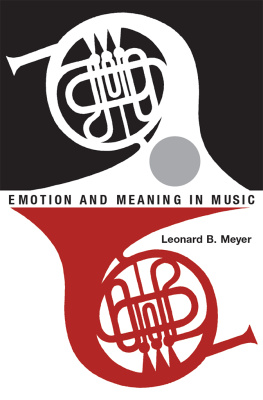
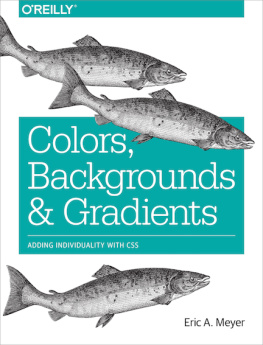





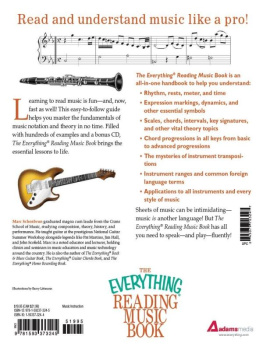
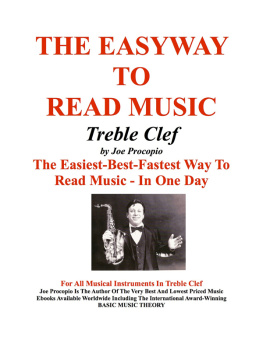
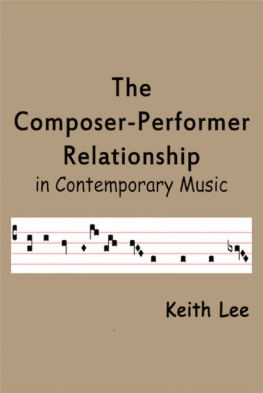
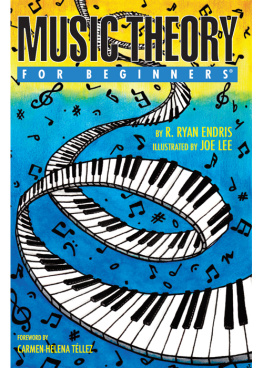

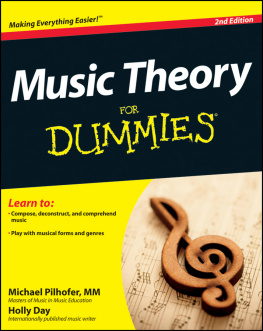
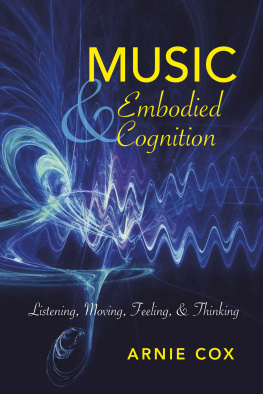
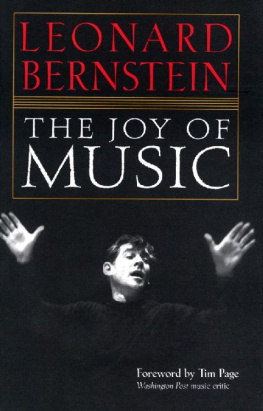

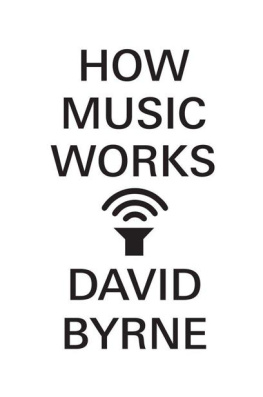
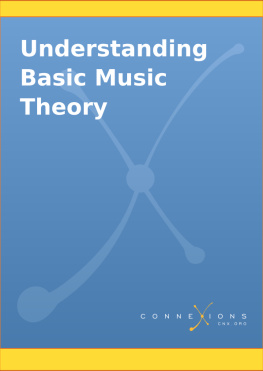
 The paper used in this publication meets the minimum requirements of the American National standard for Information Sciences Permanence of Paper for Printed Library Materials. ANSI Z39.48-1992.
The paper used in this publication meets the minimum requirements of the American National standard for Information Sciences Permanence of Paper for Printed Library Materials. ANSI Z39.48-1992.